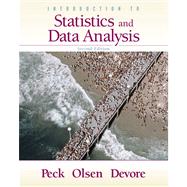
What is included with this book?
| Preface | xv | ||||
|
1 | (24) | |||
|
1 | (4) | |||
|
5 | (3) | |||
|
8 | (2) | |||
|
10 | (10) | |||
|
20 | (1) | |||
|
21 | (4) | |||
|
25 | (54) | |||
|
25 | (3) | |||
|
28 | (11) | |||
|
39 | (4) | |||
|
43 | (10) | |||
|
53 | (5) | |||
|
58 | (8) | |||
|
66 | (2) | |||
|
68 | (1) | |||
|
68 | (3) | |||
|
71 | (8) | |||
|
79 | (72) | |||
|
79 | (13) | |||
|
92 | (7) | |||
|
99 | (21) | |||
|
120 | (11) | |||
|
131 | (8) | |||
|
139 | (1) | |||
|
140 | (4) | |||
|
144 | (7) | |||
|
151 | (50) | |||
|
152 | (10) | |||
|
162 | (10) | |||
|
172 | (6) | |||
|
178 | (9) | |||
|
187 | (4) | |||
|
191 | (1) | |||
|
192 | (4) | |||
|
196 | (5) | |||
|
201 | (70) | |||
|
201 | (12) | |||
|
213 | (11) | |||
|
224 | (15) | |||
|
239 | (16) | |||
|
255 | (3) | |||
|
258 | (1) | |||
|
259 | (4) | |||
|
263 | (8) | |||
|
271 | (80) | |||
|
271 | (9) | |||
|
280 | (8) | |||
|
288 | (7) | |||
|
295 | (10) | |||
|
305 | (10) | |||
|
315 | (12) | |||
|
327 | (12) | |||
|
339 | (1) | |||
|
340 | (1) | |||
|
340 | (4) | |||
|
344 | (7) | |||
|
351 | (90) | |||
|
352 | (3) | |||
|
355 | (6) | |||
|
361 | (5) | |||
|
366 | (14) | |||
|
380 | (12) | |||
|
392 | (17) | |||
|
409 | (11) | |||
|
420 | (4) | |||
|
424 | (5) | |||
|
429 | (12) | |||
|
441 | (34) | |||
|
442 | (9) | |||
|
451 | (10) | |||
|
461 | (6) | |||
|
467 | (3) | |||
|
470 | (5) | |||
|
475 | (46) | |||
|
475 | (7) | |||
|
482 | (13) | |||
|
495 | (13) | |||
|
508 | (5) | |||
|
513 | (1) | |||
|
514 | (4) | |||
|
518 | (3) | |||
| 10 Hypothesis Testing Using a Single Sample | 521 | (54) | |||
|
522 | (4) | |||
|
526 | (6) | |||
|
532 | (13) | |||
|
545 | (11) | |||
|
556 | (10) | |||
|
566 | (2) | |||
|
568 | (4) | |||
|
572 | (3) | |||
| 11 Comparing Two Populations or Treatments 57S | |||||
|
575 | (20) | |||
|
595 | (11) | |||
|
606 | (9) | |||
|
615 | (8) | |||
|
623 | (2) | |||
|
625 | (1) | |||
|
626 | (6) | |||
|
632 | (5) | |||
| 12 The Analysis of Categorical Data and Goodness-of-Fit Tests | 637 | (38) | |||
|
637 | (9) | |||
|
646 | (17) | |||
|
663 | (3) | |||
|
666 | (1) | |||
|
666 | (4) | |||
|
670 | (5) | |||
| 13 Simple Linear Regression and Correlation: Inferential Methods | 675 | (56) | |||
|
675 | (13) | |||
|
688 | (10) | |||
|
698 | (11) | |||
|
709 | (8) | |||
|
717 | (4) | |||
|
721 | (1) | |||
|
722 | (7) | |||
|
729 | (2) | |||
| 14 Multiple Regression Analysis | 731 | (60) | |||
|
732 | (12) | |||
|
744 | (15) | |||
|
759 | (12) | |||
|
771 | (12) | |||
|
783 | (1) | |||
|
784 | (7) | |||
| 15 Analysis of Variance | 791 | (54) | |||
|
791 | (14) | |||
|
805 | (7) | |||
|
812 | (9) | |||
|
821 | (12) | |||
|
833 | (2) | |||
|
835 | (3) | |||
|
838 | (4) | |||
|
842 | (3) | |||
| Appendix: Statistical Tables | 845 | (24) | |||
| Answers to Selected Odd-Numbered Exercises | 869 | (10) | |||
| Index | 879 |
The New copy of this book will include any supplemental materials advertised. Please check the title of the book to determine if it should include any access cards, study guides, lab manuals, CDs, etc.
The Used, Rental and eBook copies of this book are not guaranteed to include any supplemental materials. Typically, only the book itself is included. This is true even if the title states it includes any access cards, study guides, lab manuals, CDs, etc.